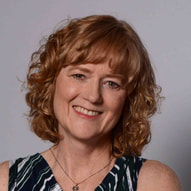|
By: Kathy Kent Toney, CEO & Founder of Kent Solutions In today's hyper-connected world, customers expect a seamless and personalized experience across all touchpoints. Gone are the days of one-size-fits-all marketing campaigns. If you're not tracking how they interact with your marketing efforts, trying to fill in the "word balloons" of what you perceive they are thinking is futile. To truly resonate with your audience, you must understand their behavior and tailor your engagement accordingly. Enter behavior-based triggers – a powerful tool that empowers you to deliver the right message at the right time based on your customers' and prospects’ actions. Here are four steps on how to use these triggers to enhance jour customers' journey: 1. Identifying Behavioral Patterns The first step in leveraging behavior-based triggers is to identify the key actions and patterns that signify intent or interest. These could range from website visits and email opens to product usage and purchase history. By closely monitoring these behaviors, you can gain valuable insights into your customers' needs and preferences. 2. Defining Trigger Points Once you've identified the relevant behavioral patterns, it's time to define the trigger points that will initiate personalized engagement. These triggers could be based on specific actions, such as abandoning a shopping cart or downloading a whitepaper, or they could be based on a combination of behaviors over time. 3. Crafting Personalized Engagement Paths With your trigger points in place, you can create tailored engagement paths that deliver targeted content and offers based on your customers' behavior. For example, if a customer abandons their shopping cart, you could trigger an automated email sequence offering a limited-time discount or free shipping to encourage them to complete their purchase. 4. Nurturing the Customer Journey Behavior-based triggers aren't just for one-off interactions; they can also be used to nurture customers through their entire journey. By continuously monitoring their behavior and responding with relevant content and offers, you can build stronger relationships and drive customer loyalty. Closing Thoughts Implementing behavior-based triggers requires a deep understanding of your customers and a willingness to adapt your marketing strategies accordingly. However, the rewards are well worth the effort. By delivering personalized and timely engagement, you can create a superior customer experience that drives conversions, fosters loyalty, and ultimately, boosts your bottom line. # # # As we all know, AI is revolutionizing the way we do business. That being said, how would you like to have a listing of some of the best AI-based marketing tools in one document? Then, this is your lucky day! If you're ready to up your marketing game, download my new freebie, 10 Sales & Marketing Automation Tools for Small Businesses on a Budget! You'll learn what some of the best tools are out there that offer an affordable price tag.
0 Comments
By: Kathy Kent Toney, CEO & Founder How often have you collected a slew of business cards or contacts on your phone at a networking event, only to realize at a much later time that you never followed up with them? It's a common scenario that many of us can relate to. But fear not; there's a solution at hand! Enter automated follow-ups—the secret weapon for businesses looking to maintain consistent communication and engagement with prospects. In this blog post, let's dive deep into the world of automated follow-ups. In case you're not familiar with "automated follow-ups," here's a definition: Automated follow-ups are a series of pre-scheduled emails or messages sent to leads at predefined intervals or triggered by specific actions. These automated sequences nurture leads, provide valuable information, and guide prospects through the sales funnel. 1. Crafting Engaging Follow-Up Sequences Crafting engaging follow-up sequences that resonate with leads is crucial. Personalization is critical, tailoring messages to address individual needs, pain points, and interests. By leveraging data insights and segmentation, businesses can deliver relevant content that captures their audience's attention. 2. Leveraging Multi-Channel Engagement Diversifying communication channels beyond email can enhance the effectiveness of automated follow-ups. Incorporating social media interactions, SMS messages, or personalized video outreach adds variety and depth to follow-up sequences, increasing engagement and responsiveness. 3. Implementing Behavioral Triggers Behavioral triggers enable businesses to send automated follow-ups based on specific actions or engagement metrics. Leveraging behavioral data to identify opportunities for timely follow-ups, such as website visits, form submissions, or content downloads, is vital. By responding promptly to prospect actions, businesses can effectively stay top-of-mind and nurture leads. 4. Analyzing Performance Metrics Tracking and analyzing performance metrics is essential for optimizing automated follow-up sequences. Key metrics such as open rates, click-through rates, and conversion rates are monitored to assess the effectiveness of follow-up campaigns. By identifying trends and areas for improvement, businesses can refine their strategies and enhance engagement with leads. 5. Iterating and Refining Strategies Continuous iteration and refinement are crucial for maximizing the impact of automated follow-ups. Testing different messaging, timing, and frequency settings to identify the most effective approach for engaging leads yields better results. By leveraging A/B testing and performance data, businesses can iterate their strategies and adapt to evolving customer preferences. In conclusion, automated follow-ups are pivotal in sustaining lead relationships and driving long-term engagement. By understanding the fundamentals of automated follow-ups and implementing effective strategies, businesses can nurture leads effectively, build trust, and ultimately drive conversions. # # # If you're interested in using an automated follow-up system, you've come to the right place! Our affordable solution will help you increase engagement many times over your current rate. To learn more, let's chat! Click the button below to schedule an appointment.
By: Kathy Kent Toney, CEO & Founder, Kent Solutions Did you know that there is an incredible automation tool that is a game changer for helping marketers and salespeople spot and prioritize top-notch leads that are more likely to convert? It's lead scoring, and it's an excellent way for companies to turbocharge their lead qualification game and zero in on the prospects that count. If you're not familiar with lead scoring. Here's a definition: Lead scoring is a method used by businesses to rank and prioritize leads based on factors like demographics, behavior, and engagement. It helps identify the leads most likely to convert into customers, allowing companies to focus their sales and marketing efforts more effectively. 1. Harnessing the Power of Automation Lead scoring automation transforms how businesses evaluate leads. By leveraging sophisticated algorithms and predictive analytics, companies can assign scores to leads based on various criteria, such as demographics, engagement, and online behavior. This behind-the-scenes automation empowers businesses to make informed, data-backed decisions. It removes the ambiguity often associated with manual lead qualification and ensures that sales and marketing teams align in their approach. 2. Benefits of Automated Lead Scoring Automated lead scoring offers numerous advantages: Improved Lead Quality By accurately assessing lead quality, businesses can concentrate on leads with the highest likelihood of converting, leading to higher conversion rates and increased revenue. Enhanced Efficiency Automation streamlines the lead-scoring process, enabling businesses to handle large volumes of leads with minimal manual intervention. Doing so frees up time and resources for other strategic initiatives. Greater Sales and Marketing Alignment Automated lead scoring fosters collaboration between sales and marketing teams by providing a common framework for evaluating leads. This alignment ensures that both teams work towards the shared goal of driving revenue growth. 3. Implementing Best Practices To maximize automated lead-scoring effectiveness, businesses should follow the following best practices: Define Clear Scoring Criteria Establish transparent criteria for assigning lead scores, considering demographic and behavioral factors indicative of purchase intent. Regularly Refine Scoring Models Continuously evaluate and refine lead scoring models based on feedback from sales and marketing teams, as well as performance metrics such as conversion rates and sales velocity. Integrate with CRM Systems Integrate automated lead scoring systems with CRM platforms to ensure seamless data synchronization and enable real-time lead prioritization. In the end, automated lead scoring is a game-changer for businesses seeking to optimize their lead-generation efforts. By leveraging automation and data analytics, companies can more effectively identify and prioritize high-quality leads, ultimately driving revenue growth and long-term success. # # # Do you want to jump on the bandwagon if you're not using lead-scoring automation? That's a feature in our CRM. It has many other unique features:
If that sounds intriguing, schedule a FREE consultation with our team. We'd love to share our system's powerful features and how it can revolutionize your sales and marketing efforts! Click the button below to schedule your consultation.
By: Kathy Kent Toney, CEO & Founder of Kent Solutions In marketing, drip campaigns are powerful tools for nurturing leads and fostering meaningful engagement. These automated email sequences deliver targeted content to prospects over time, guiding them through the buyer's journey and keeping your brand top-of-mind. According to The Annuitas Group, nurtured leads make 47% larger purchases than non-nurtured leads. That's why drip campaigns are indispensable for any business looking to maximize the effectiveness of their email marketing efforts. Here's what they can do for you: 1. Personalized Content Delivery Drip campaigns excel in delivering personalized content tailored to recipients' interests and behaviors. You ensure that emails resonate and drive higher engagement by segmenting your audience and crafting relevant messages for each segment. Dynamic content elements like personalized product recommendations or tailored offers can further enhance the effectiveness of your drip campaigns. 2. Timely Follow-Up and Nurturing Effective lead nurturing requires consistent communication and timely follow-up. Drip campaigns enable you to stay connected with prospects throughout their journey, delivering the right message at the right time. By automating follow-up emails based on specific triggers or actions the recipient takes, you can ensure that leads receive timely responses and relevant information, ultimately increasing the likelihood of conversion. 3. Lead Qualification and Segmentation Drip campaigns aid lead qualification and segmentation by monitoring recipient engagement and interactions. Insights gathered help segment the audience based on engagement level, allowing tailored messaging. High-engagement leads can be fast-tracked through the sales funnel, while others receive longer-term nurturing. 4. Relationship Building and Trust Establishment Building solid relationships with your audience is essential for long-term success. Drip campaigns provide an opportunity to consistently engage with prospects, gradually building rapport and trust over time. By delivering valuable content, addressing pain points, and providing solutions to their challenges, you can position your brand as a trusted advisor and industry authority, increasing the likelihood of conversion when the time is right. Best Practices Now that you know the benefits of drip campaigns, here are some ideas you can implement today to take your email marketing to the next level!
By integrating drip campaigns into your strategy and following these best practices, you can effectively engage your audience, nurture leads, and drive conversions. And who doesn't want that? # # # How would you like to have a listing of some of the best AI-based marketing tools in one document? Then, this your lucky day! So if you're ready to up your marketing game, download my new freebie, 10 Sales & Marketing Automation Tools for Small Businesses on a Budget! You'll learn what some of the best tools are out there that offer an affordable price tag.
|
Archives
July 2024
Categories
All
|








 RSS Feed
RSS Feed
